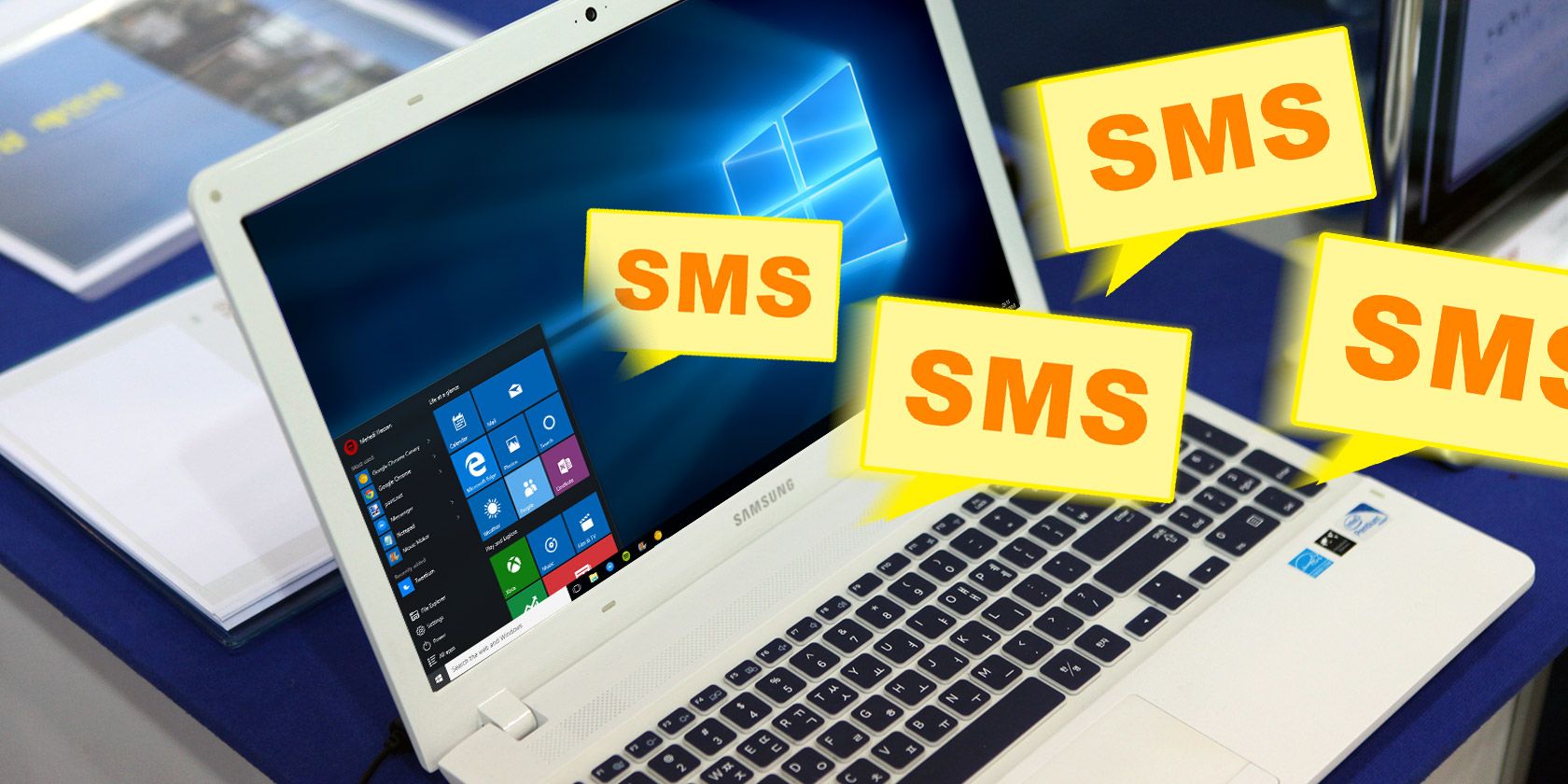6 Ways to Send and Check SMS Messages on a PC
Posted by SHUBHAM AGARWAL

Despite the onset of instant messaging, SMS still plays a critical role in your digital life for purposes like bank alerts. Unfortunately, for most phones, there’s no straightforward way to manage SMS conversations on a desktop.
It’s usually not a good idea to delay checking SMS messages for too long, as it could end up hampering your workflow. Fortunately, there are ways you can attend to SMS conversations from your the comfort of your computer.
Here are the best apps for checking your SMS messages on a computer.
1. iMessage (iOS, Mac)

iOS users have it easy. Apple doesn’t allow alternative SMS clients, so have to live with the preloaded Messaging app. While there are a few downsides to it, the default SMS app does come with a host of handy features. And one of those is cloud sync that allows you to read or reply to SMS messages from your Mac’s native Messaging app.
If you’re already using the Messaging app but are unable to view the conversations from a Mac, you’ll have to enable iCloud Sync on your phone. To do that, go into Settings > [Your name] > iCloud and there, turn on Messages.
Sadly, Windows users have no option for this if they own an iPhone.
2. Google Voice (Web)

Google Voice subscribers have an option to view their messages through the official web app. You can compose new messages and it even supports media previews. On the same page, you also have access to your phone logs, voicemail, and more.
To use it, all you need to do is head over to the Google Voice website on your PC, sign in with your account, and you’re all set.
Unlike other solutions on the list, Google Voice’s web app doesn’t require a constant phone connection, since all your conversations are stored on Google’s servers. But unfortunately, it’s limited to the United States for now.
3. Android Messages (Android)
Google’s default SMS app for phones running stock Android, Android Messages, has a web client as well. It features a Material Design theme and a familiar two-column layout.
In addition, you can enable dark mode from the settings. There’s an option for receiving notifications from your browser too. You can even commence both private and group conversations from the web app itself.
To get started, open the Android Messages website. Once there, fire up the Messages app on your phone and under the three-dot menu, tap Messages for web. Follow the steps and you should be online in a few seconds.
In case you’d like to install Android Messages and you don’t have a compatible phone, try sideloading the latest APK file.
Download: Android Messages | Messages APK (Free)
4. Pushbullet (Android)
Apart from letting you quickly share files and mirror notifications from your phone to a PC, Pushbullet also has a dedicated SMS tab. You will find all your existing conversations there, and can view or reply with both text and media.
What’s more, you even have the ability to send a new text message to an existing contact or any phone number.
If you didn’t enable SMS mirroring during Pushbullet’s setup process, launch the app on your phone. Then, swipe out from the left edge to reveal the navigation drawer and choose SMS. Enable SMS sync and you’ll be asked to grant the necessary permissions. Once that’s over, you should all set.
On your computer, there are multiple ways you can view your messages. You can download the desktop apps or browser extensions, or sign in at the Pushbullet website. Note that you’re limited to 100 messages per month unless you pay for Pushbullet’s expensive Pro plan.
Download: Pushbullet Apps (Free, subscription available)
5. Pulse SMS (Android)
Pulse is a third-party SMS client that offers a multitude of advanced features. That includes a wide range of themes to choose from, password protection, Giphy integration, previews for web links, a ton of nifty shortcuts, and of course, the ability to manage SMS messages from your computer. The Pulse web app functions similar to Android Messages and comes with a modern, clean aesthetic with all the tools you need.
However, these supplementary features are not free. For syncing your SMS conversations across devices, Pulse charges a monthly fee of $1 or $6 for a year. Alternatively, you can pay a one-time fee of $11 for lifetime access.
Download: Pulse SMS (Free, subscription available)
6. MightyText (Android)
If you’re looking for a comprehensive platform and plan to an SMS app for business purposes, try MightyText. Along with letting you text from your computer, MightyText has a plethora of utilities like an SMS scheduler, a multi-window mode where you can attend to numerous chats at once, and more.
MightyText can do a lot of what Pushbullet offers, including notification mirroring. Because the free version has a monthly cap for how many SMS messages you can send, you will have to purchase the subscription for unlimited access. It’s available as a web app and an extension for nearly all browsers.
Download: MightyText (Free, subscription available)
Apps for Continuity Between Android and Mac
The majority of the apps we discussed are built for Android users since Apple doesn’t allow third-party SMS clients. Apple’s continuity features between iOS and macOS are usually enough to cover your multi-device needs.
Thankfully, Android’s wide ecosystem means you can easily replicate those. Here are some great apps for continuity between Android and a Mac.
Read the full article: 6 Ways to Send and Check SMS Messages on a PC





